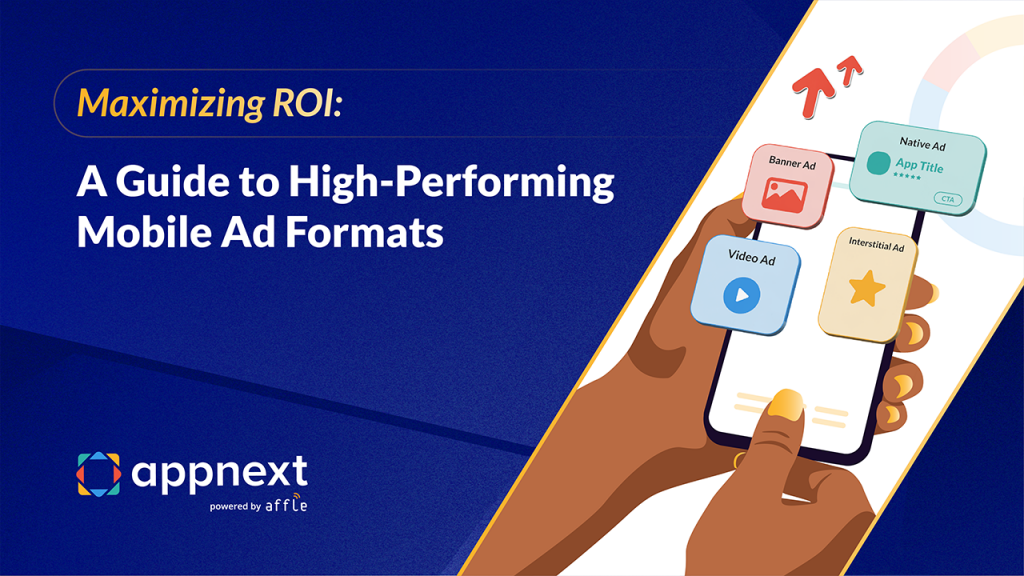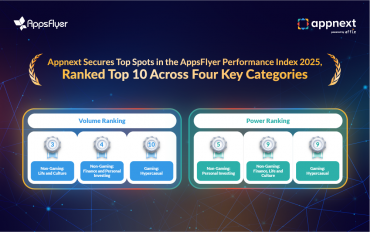Introduction
The mobile advertising landscape is thriving and more competitive than ever.
Marketers are vying for attention in a world where every scroll, swipe, and tap counts. Simply increasing ad spend is no longer a sustainable growth strategy.
When performance dips, it’s easy to blame the format or the creative.But often, the real challenge isn’t what you’re showing, it’s when and where.True ROI comes from understanding the user journey and meeting people at the exact moment of intent.It’s time to move beyond interruption and embrace intelligent integration.
A Quick Look at Core Mobile Ad Formats
To set the stage, let’s briefly cover the most common mobile ad formats:
- Interstitial Ads: Full-screen ads that appear at natural transition points in the user experience, such as between game levels or after an article loads.
- Rewarded Video Ads: Opt-in video ads that offer users a tangible reward (like in-game currency or premium content) in exchange for watching.
- Native Ads: Ads designed to blend seamlessly with the look, feel, and function of the media format in which they appear. They feel like part of the user experience, not an interruption.
- Playable Ads: Interactive ads that give users a mini-preview or a “micro-game” experience of an app before they install it.
Beyond the Format: Why Context Drives ROI
Choosing from the list above is just the starting point. Any ad format, no matter how engaging, will fail if it’s delivered to the wrong person at the wrong time. Success in today’s mobile-first world depends on connecting with users in their natural “micro-moments of intent.” This is where an intent-driven approach, powered by personalization, transforms an ad from a simple impression into a genuinely helpful recommendation.
Q: How does context change the impact of an ad format?
A: Imagine a user is actively searching for investment tools on their device’s keyboard. A native recommendation for a fintech app appearing at that exact moment is a helpful suggestion that solves a need. That same recommendation delivered as a random, full-screen interstitial while they are playing a game would feel intrusive and be dismissed immediately. Context turns a potential annoyance into a valuable discovery.
The OEM Advertising Advantage: The Most Native Experience
While in-app native ads are effective, OEM advertising takes this concept to a new level. By integrating app recommendations directly into the device’s interface, you can reach users outside of third-party apps—in the very ecosystem where they spend their time. These on-device touchpoints include:
- Smart Folders: Automatically organized folders that suggest relevant apps.
- App Vault / Minus-One Screens: Curated content and service hubs.
- Device Search: Recommendations that appear when users search their own device.
- Apps Stores: Native app stores from manufacturers like Xiaomi, Honor, Vivo and others.
These placements are the ultimate native ad formats because they are part of the core user experience. This allows brands to connect with users during moments of natural exploration, leading to higher-quality installs and stronger retention.
How an AI-Powered Engine Elevates Every Ad Format
The key to unlocking this contextual power is intelligence. An AI-powered recommendation engine can process millions of real-time signals from app usage patterns to search activity to anticipate what a user might need next. This technology ensures that the right app is recommended at the perfect moment, making discovery feel intuitive rather than invasive.
By understanding the user journey on a deeper level, an AI-driven platform ensures that every placement, regardless of the format, is optimized for maximum impact. This leads to better performance, more efficient spending, and a user experience that builds trust instead of friction.
From Impressions to Impact
The conversation around mobile ad formats needs to evolve. Instead of asking “Which format converts best?” marketers should be asking, “What is the right discovery moment for my user?” By leveraging the deeply native environment of OEM advertising and the predictive intelligence of an AI-powered platform, you can ensure your app is not just seen, but genuinely discovered.
Frequently Asked Questions (FAQs)
1. What are the most effective mobile ad formats for achieving high ROI?
- The most effective ad format depends entirely on context and user intent. However, native and rewarded ad formats tend to deliver higher ROI because they are less intrusive and offer a clear value exchange.
- When these formats are delivered through on-device OEM placements at moments of high intent, their performance is significantly amplified, leading to better user quality and engagement.
2. How is OEM advertising different from traditional in-app advertising?
- Traditional in-app advertising places ads within another app’s environment, often interrupting the user’s flow.
- OEM advertising integrates app recommendations directly into the device’s native interface, such as the home screen, device search, or pre-installed app stores.
- This allows brands to reach users during their natural mobile journey, making discovery feel organic rather than forced and intrusive.
3. Can AI really improve the performance of standard ad formats like interstitials?
- Absolutely. An AI-powered engine improves performance by ensuring the ad is delivered with precision timing.
- It analyzes hundreds of contextual signals to predict when a user is most receptive to a recommendation.
- For an interstitial, this means showing it at a natural pause point where it’s least disruptive, dramatically increasing the likelihood of a positive interaction and conversion.
4. What is the role of personalization in choosing an ad format?
- Personalization is critical. It helps tailor the entire discovery experience to an individual user’s needs and behaviors.
- An AI-driven personalization engine can determine not only which app to recommend but also the best format and moment for that recommendation.
- For example, one user might respond best to a rewarded video, while another might prefer a simple native suggestion in a folder. Personalization optimizes the entire user journey.




Comments are closed.